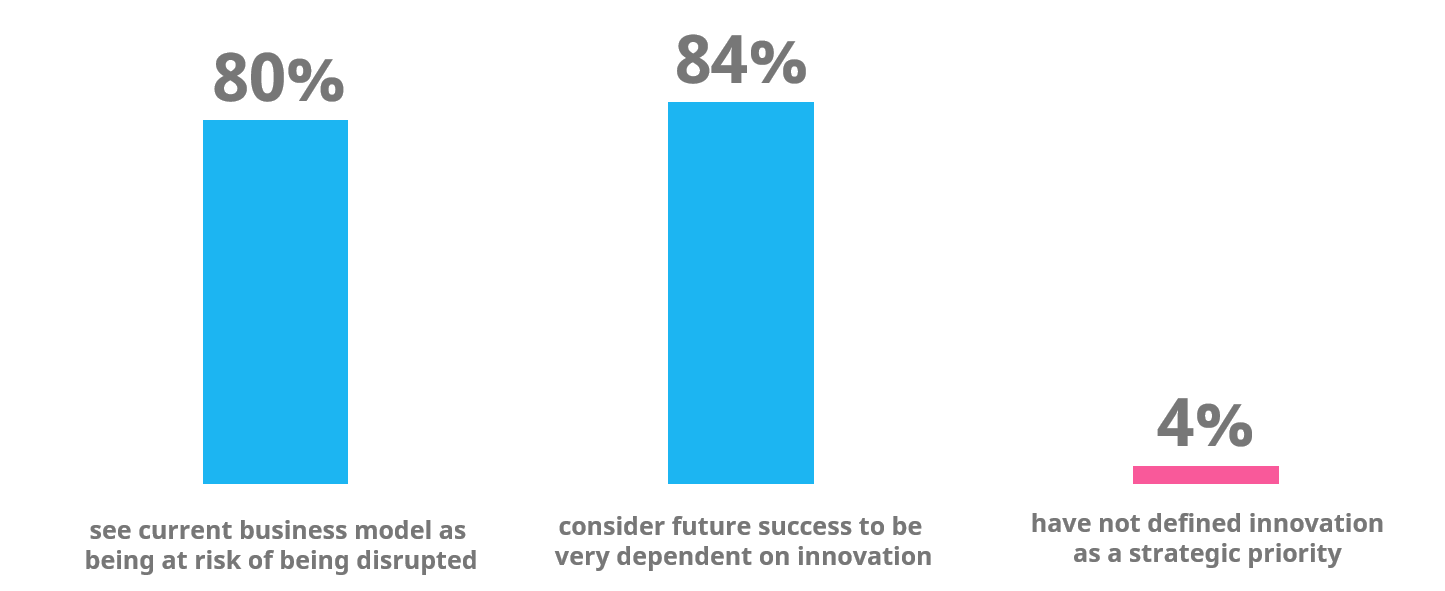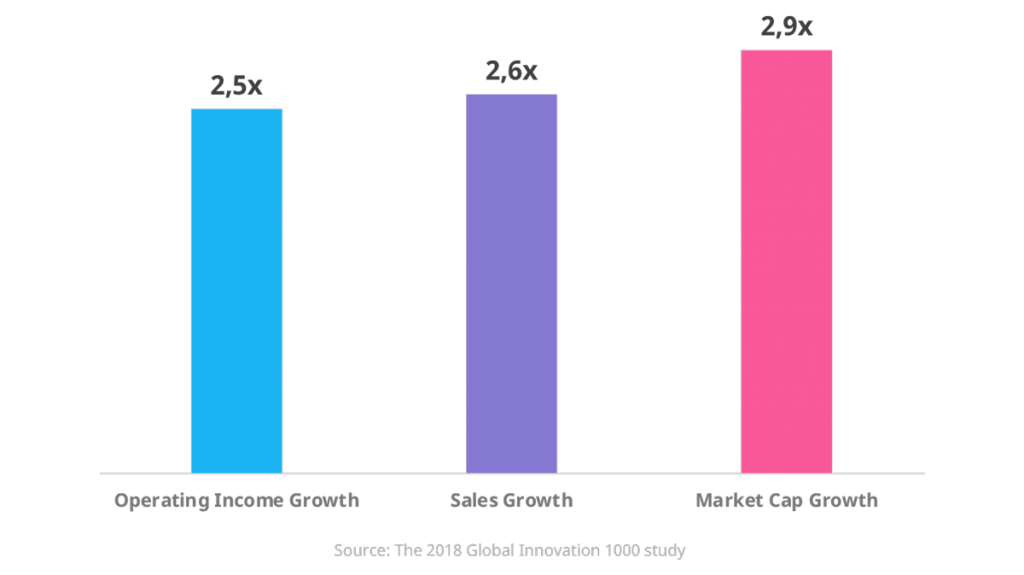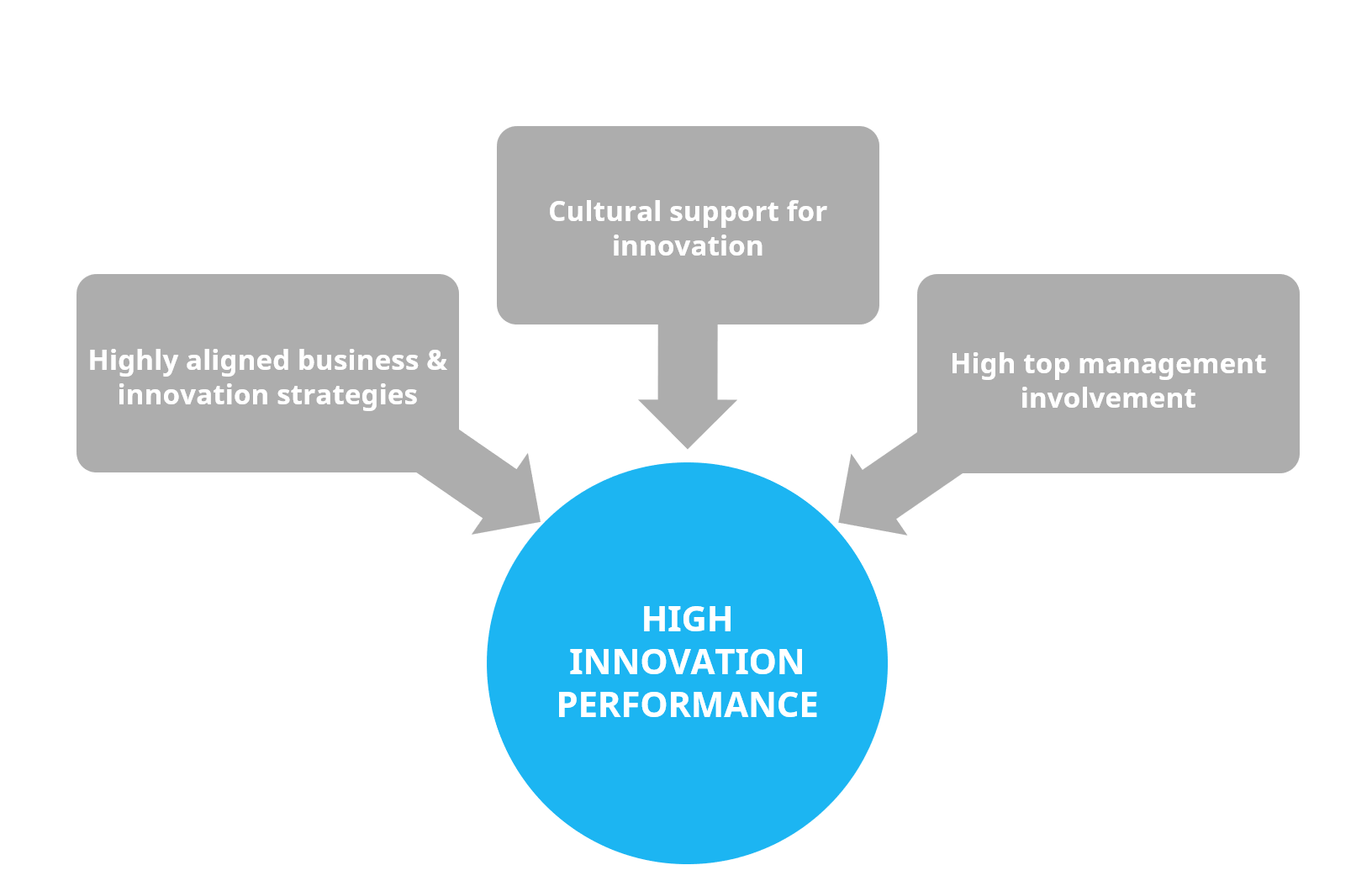The Importance of Senior Management Involvement for Innovation
Senior management is without a doubt a tough job. If you’re one of the few executives at the top of a large organization, there are likely hundreds of people; customers, employees, partners, and the list goes on; who are all looking for your attention regarding an endless sea of different topics and initiatives.
As such, nowhere is prioritization as important of a skill as for the people at the very top of these organizations. Most good executives are very conscious of how they spend their time.

Innovation is one of the areas where people are often looking for senior management involvement, yet, where it tends to be lacking at times.
As we discuss the role of senior management and their involvement in innovation management work with our customers on a regular basis, we thought we’d share some of our thoughts and experiences on the topic.
Table of contents
Should senior management be involved in innovation?
The big question obviously is: should senior management even be involved in innovation work?
Well, the short answer is: yes.
Let us elaborate on that.
Based on the research done by McKinsey, 80% of executives consider their current business models to be at risk. In addition, half of the S&P 500 is forecasted to be replaced in the next ten years.
As such, the evidence would squarely indicate that for most organizations, change is inevitable and to remain competitive in these turbulent times, innovation is a key capability.
The challenge here is that many organizations, especially publicly listed companies, are under pressure to boost short term results, such as next quarter’s earnings, which tends to affect management priorities.
So, even if it typically takes some time for innovation to materialize in the bottom line, it still makes sense for management to invest both time and money on it as it’s one of the few ways to succeed in the medium and long term.
Most executives do seem to understand this and already rate innovation near the top of their list of priorities, in which case they naturally should also allocate their time and efforts accordingly.

Why it’s important for top management to contribute to innovation
While the companies that are usually rated as the most innovative in the world are making huge investments in R&D and innovation by any standard, the size of investments doesn’t necessarily guarantee that innovation will happen.
For example, a recent Strategy+Business article shows that top innovators are able to significantly outperform the rest of the Global Innovation 1000 (1000 largest corporate R&D spenders) across a variety of financial metrics such as revenue, operating income and market cap growth.

According to their research, the top three factors that most significantly contributed towards high innovation performance are squarely in areas where the contribution of top management is key:
- Closely aligned business and innovation strategies
- Company-wide cultural support for innovation
- High top management involvement in the innovation program
The top three factors that most significantly contribute towards high innovation performance all start at the top.

Let’s address each of these factors briefly to see why these factors play such a big role for innovation performance.
Closely aligned business and innovation strategies
As many executives have realized, the overall business strategy should always be aligned with the execution of that strategy across all levels of the organization.
No good executive wants a sales or marketing strategy that is poorly suited for addressing the larger goals of the organization and the same holds true for innovation.
If innovation strategy isn’t designed to help an organization reach its overall goals, the executives are simply gambling on the innovation program coming up with a miraculous disruptive innovation out-of-the-blue, which will then hopefully lead the organization to a new direction.
While this is of course possible, it’s not very likely to happen that way.
What’s more, even if finding completely new business opportunities was the goal of the innovation efforts, why wouldn’t the organization then make that a priority in the overall business strategy?
In the end, innovation is simply about creating the future of the organization and as such, it just makes sense for top management to ensure that this work is closely aligned with the overall goals of the organization, whatever they may be.
Innovation is simply about creating the future of the organization and as such, it simply makes sense for top management to ensure that this work is closely aligned with the overall goals of the organization.
Cultural support for innovation
Although it’s difficult to prove whether a culture is pro-innovation or not, 71% of executives in high-growth companies identified their culture as such, whereas only 33% of them did so in slow-growth companies in the 2018 edition of the aforementioned Global Innovation 1000 study.
There are certain cultural characteristics that are generally considered to be universally beneficial for innovation, such as collaboration, work ethic, and a willingness to experiment, as well as some that are seen as negative, such as blind obedience.

However, the right culture is also dependent on the strategic goals the organizations has. Companies that are trying to focus innovation work on achieving cost leadership should likely have a different culture from another organization that is more value-driven.
The good thing is that, once the business and innovation strategies are aligned, it’s also much easier to create a singular culture that supports both of them simultaneously.
A transition to a pro-innovation culture isn’t easy and it always takes time. It typically requires some positive pressure from the top, clear communication, as well as the willingness and ability to change the day-to-day practices, both of which the teams can lack themselves. Suffice to say, to have the best chance of success, cultural change too should be led from the top.
High top management involvement in the innovation program
In addition to top management being the only party that can make certain decisions, such as those related to the overall strategy, there are also additional benefits to their involvement in the innovation program.
Top management should never underestimate the impact their interest might have on employees’ perceptions and motivation.
If management shows interest in an employee’s work, they typically see it as being more important for the organization, which in turn makes the work more meaningful for the employee and also signals to them that succeeding in it would be a great opportunity for them to shine. Together these factors are likely to motivate and inspire the employee to perform better.
In addition, by being more involved, top management can better communicate the importance of these factors and ensure that the aforementioned strategic and cultural alignment are in fact in place.
If, and usually when, things don’t initially turn out as planned, they are also well positioned to help the team take corrective action and remove unnecessary barriers that might otherwise be difficult to address.
How should it be done?
We’ve occasionally seen executives withhold from taking part in innovation due to their inexperience in innovation work, or bad experiences or failures in their previous attempts at innovation.

Considering that typically CEOs come from more risk-averse and operations focused backgrounds, such as finance, operations and legal, and that board members of large organizations consider innovation to be one of the weakest areas of their expertise, this is quite a natural challenge to have.
While top management having little experience in innovation is without a doubt a challenge, it doesn’t have to be a blocker.
As they have plenty of other priorities as well, they shouldn’t necessarily be in the trenches innovating.
Senior management simply needs to show others the way forward and then take ownership in helping their team achieve the desired results.
As ex-CEO of Google Eric Schmidt puts it, the executives of the most innovative organizations often simply “manage chaos”.
To get there, senior managers should find a way to make sure that anyone in the organization is able to answer the following questions:
- Why is innovation important for us?
- What is the organization looking to achieve with it?
In addition, they need to show that they’re serious about innovation and in achieving the desired results. Here actions speak louder than words, so make sure that the decisions you make are in line with this.
Moving forward
With all of that being said, some of you might be wondering about where to go from here.
If you’re someone who thinks that their senior management should be more involved in innovation work than they currently are, you should take ownership of the situation and “lead up the chain of command”.
Share your concerns with senior management and ask:
- Is innovation important for the organization?
- How is it aligned with the overall strategy?
- Why isn’t senior management spending more time on it?
The conversation will serve as a starting point which you can hopefully use to start to work together to improve innovation performance.

On the other hand, if you’re a senior manager, you too need to take ownership, be brutally honest and ask both yourself, as well as your team the following questions:
- Is innovation important for our strategy?
- Am I spending enough/too much time on it considering what its priority is?
- Have I been able to communicate why innovation is/isn’t important for us?
- Do we have a pro-innovation culture and an aligned innovation strategy?
- Are the people in charge of innovation able to lead us to the results we want?
As I’ve mentioned, innovation is no less than about creating the future of the organization and as such, senior management should always be involved in it.
The extent and nature of this involvement can vary tremendously, but it most certainly needs to be there.
Best of luck in finding the right approach for your organization!
This article was originally published on Innovationmanagement.se, a professional network of authors sharing relevant, inspiring and actionable knowledge to businesses and individuals looking to increase their innovation.
Interested in Innovation and Leadership?
Subscribe to our blog to get the latest stories on innovation, leadership and culture straight to your inbox.




.jpg)
